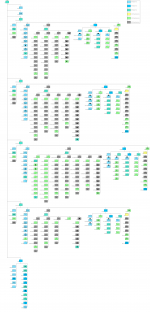- Reaction score
- 9,555
- Points
- 1,160
The Department of ‘Meh.. Good Enough’?
Seems to work for the USAF....
Air Force Clears Tanker for Refueling Mission with Work Arounds
Air Force Clears Tanker for Refueling Mission with Work Arounds
And other departments. Sounds as if there is an increasing emphasis on working in the near term with what is available, despite unsettling the accountants.
Rapid Defense Experimentation Reserve Launching Despite Funding Uncertainty
Rapid Defense Experimentation Reserve Launching Despite Funding Uncertainty
Army Taking Incremental Approach to Fielding New Missile
Army Taking Incremental Approach to Fielding New Missile
Uncrewed Aircraft Can Offset Declining Fighter Squadron Capacity, Air Force Official Says
Uncrewed Aircraft Can Offset Declining Fighter Squadron Capacity, Air Force Official Says
B-21 Bomber to Make Public Debut in December
B-21 Bomber to Make Public Debut in December
AFA NEWS: Tests Show Converting C-130s into Amphibious Aircraft ‘Viable’
AFA NEWS: Tests Show Converting C-130s into Amphibious Aircraft ‘Viable’
I blame the Ukrainians. They have reintroduced the concept of "suck it and see".
Let the battlefield be the proving ground.



